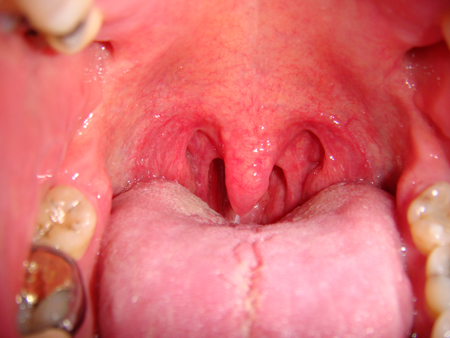Summary
Definition
History and exam
Key diagnostic factors
- noisy breathing during sleep
- apneas
- choking or gasping
Other diagnostic factors
- waking up tired
- daytime somnolence
- hyperactivity
- behavioral problems
- night terrors
- enuresis
Risk factors
- increasing age
- male sex
- obesity (BMI >30)
- craniofacial abnormalities
- endocrine disorders
- neck circumference over 40 cm
- sedating medications
- adenotonsillar hypertrophy
- long soft palate and uvula
- alcohol consumption
- Down syndrome
- gastroesophageal reflux
- active or passive smoking
- abnormal epiglottis
- hypopharyngeal cysts or tumors
- rhinitis/nasal obstruction
- asthma
Diagnostic tests
1st tests to order
- nasal decongestant test
- Epworth sleepiness score (ESS)
Tests to consider
- snoring scale score
- TFTs
- growth hormone level
- skin-prick tests/serum allergen-specific IgE tests
- sleep study
- acoustic analysis
- pharyngeal manometry
- sleep nasendoscopy
Emerging tests
- head and neck 3-dimensional CT
- head and neck MRI
Treatment algorithm
adult: without UARS or OSA
adult: with UARS or OSA
child: without concurrent indication for tonsillectomy or adenoidectomy
child: with concurrent indication for tonsillectomy or adenoidectomy
child: with UARS or OSA
Contributors
Authors
Nadia Ashraf, BMBS, BMedSci(Hon), DA, DOHNS, FRCS(ORL-HNS)
Specialty Registrar in Otorhinolaryngology-Head & Neck Surgery
Sheffield Teaching Hospitals NHS Trust
Sheffield
UK
Disclosures
NA declares that she has no competing interests.
Showkat Mirza, BM, BS, BMedSci, FRCS(ORL-HNS)
Consultant in Otorhinolaryngology-Head & Neck Surgery
Sheffield Teaching Hospitals NHS Trust
Sheffield
UK
Disclosures
SM declares that he has no competing interests.
Peer reviewers
Jayant Pinto, MD
Assistant Professor of Surgery
Section of Otolaryngology-Head and Neck Surgery
University of Chicago
Chicago
IL
Disclosures
JP declares that he has no competing interests.
Michael J. Hensley, MBBS, PhD, FRACP
Director
Department of Respiratory and Sleep Medicine
John Hunter Hospital
Professor and Head
School of Medicine and Public Health
Faculty of Health
The University of Newcastle
NSW
Australia
Disclosures
MJH declares that he has no competing interests.
Peer reviewer acknowledgements
BMJ Best Practice topics are updated on a rolling basis in line with developments in evidence and guidance. The peer reviewers listed here have reviewed the content at least once during the history of the topic.
Disclosures
Peer reviewer affiliations and disclosures pertain to the time of the review.
References
Key articles
Savage CR, Steward DL. Snoring: a critical analysis of current treatment modalities. Does anything really work? Curr Opinion Otolaryngol Head Neck Surg. 2007 Jun;15(3):177-9. Abstract
Kubba H. A child who snores. Clin Otolaryngol. 2006 Aug;31(4):317-8. Abstract
Fairbanks DNF, Mickelson SA, Woodson BT, eds. Snoring and obstructive sleep apnea. 3rd ed. Philadelphia, PA: Lippincott, Williams & Wilkins; 2003.
Friedman M. Prognostic indicators for successful uvulopalatopharyngoplasty. Sleep. 2000;23:A268.
Reference articles
A full list of sources referenced in this topic is available to users with access to all of BMJ Best Practice.

Differentials
- Upper airway resistance syndrome (UARS)
- Obstructive sleep apnea (OSA)
- Stridor
More DifferentialsGuidelines
- International classification of sleep disorders - third edition, text revision (ICSD-3-TR)
- Manual for the scoring of sleep and associated events
More GuidelinesPatient information
Sleep apnea in adults (obstructive)
More Patient informationVideos
How to examine the nasal cavity
More videosLog in or subscribe to access all of BMJ Best Practice
Use of this content is subject to our disclaimer